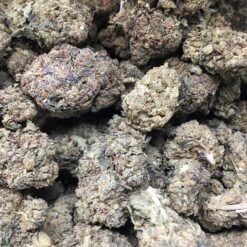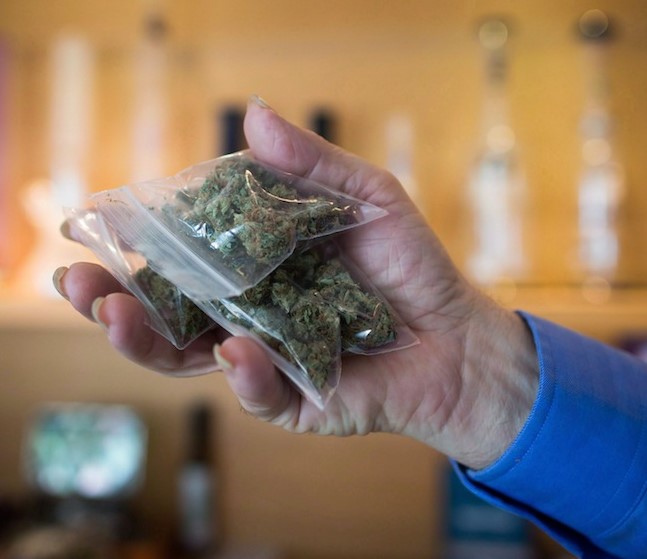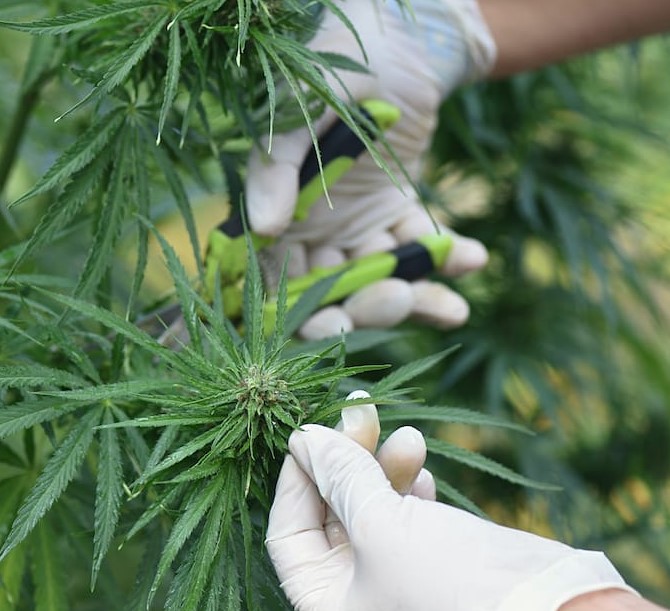-
×
 GasDank Pre-Roll Pack
1 × $10.00
GasDank Pre-Roll Pack
1 × $10.00 -
×
 v7-Green Crack - Indica AA
1 × $40.00
v7-Green Crack - Indica AA
1 × $40.00
Sous-total: $50.00
IMPORTANT! WHO USING GMAIL SERVICE PLEASE CHECK YOUR SPAM FOLDER!
Today, 33 states and the District of Columbia have legalized medical marijuana, but it is still illegal at a federal level. If you have a green thumb and have been given a medical marijuana certification, then getting a grower’s license may be the way to go.

Although many states allow individuals to grow their own cannabis for personal use, those who wish to establish a business out of their experience must acquire the appropriate permits and rules. Running a medical cannabis company is not for everyone, but if done correctly, it may be lucrative after you’ve paid for the equipment, lighting setup, seeds, growth media, licenses, and other initial costs.
It’s crucial to remember that merely because your state recognizes medical marijuana as legal does not imply it allows commercial production or even personal cultivation. Nonetheless, obtaining a grower’s license is the only lawful method to go if you’re enthusiastic about your cannabis business and want to take it to the next level.
Continue reading to learn how to obtain a growers license for medical marijuana with our simple instructions…
In most states, people who use medical marijuana are allowed to cultivate a certain amount of plants for personal use. These are limited-scale cultivations that don’t require any additional permits save for a valid medical marijuana card and some understanding of your state’s cannabis laws and rules. Because your goods can’t be sold, this sort of farming cannot be done for profit. There may exist loopholes in the legislation, such as permitting cannabis to be given or donated to another cardholder, but these things fall into a legal grey area.
Here’s a look at the medical cannabis states that allow individuals to cultivate their own cannabis, as well as any restrictions:
Alaska (for medical and 21+): Only 12 plants per family, and no more than two people. Up to 1 ounce of product may be carried away.
Arizona (medical only): Only up to 12 plants can be grown if you live more than 25 miles from the closest dispensary.
California (for medical and 21+): For anyone 21 or older, up to 6 plants may be grown at a time. For medical card holders, up to 12 immature or 6 mature plants are permitted. Up to 1 ounce of cannabis may be kept on one person.
Colorado (for medical and 21+): It is legal to cultivate up to 6 plants per person, with only 3 or less in the flowering stage of development, for anyone 21 years old and above. More than 12 plants per home is not permitted. Residents aged 21+ can keep up to 1 ounce, as long as they have a valid CO medical card.
District of Columbia (for medical and 21+): Anyone 21 or older can have up to 2 ounces of cannabis. Only Medical Cardholders are restricted to just 2 ounces or less. Individuals 21 and older may legally grow up to 6 plants, with only 3 or fewer in a developed stage.
Hawaii (medical only): 7 ounces or less in one’s possession is fine. For personal cultivation, up to 7 plants (between patient and caregiver).
Maine (for medical and 21+): Patients 21 years old or older and qualifying patients can only possess 2.5 ounces. Residents of Maine may grow up to 12 immature plants and 6 mature plants.
Massachusetts (for medical and 21+): Anyone aged 21 or older may grow up to 6 mature plants, which must be kept private at all times.
Michigan (for medical and 21+): The maximum amount of usable marijuana that may be possessed is 2.5 ounces, or 12 plants (must be kept in a secured, locked facility). Some additional limitations apply.
Montana (medical only): Up to 1 ounce in your possession. For personal use, no more than 4 mature plants and 12 seedlings are allowed.
Nevada (for medical and 21+): Residents outside of a 25-mile radius from a dispensary must be at least 21 years old and may grow up to six (6) plants or twelve (12) plants each residence. Residents who are 25 miles or more from a dispensary may produce up to 12 mature and/or immature plants.
New Mexico (medical only): It is legal to own up to 8 ounces in the state of California. Those who apply for a Personal Production License (PPL) can grow 12 seedlings and 4 mature plants.
North Dakota (medical only): Patients are allowed to possess up to 3 ounces. Residents of more than 40 miles from the nearest dispensary may cultivate up to 8 plants if they reside more than 40 miles away.
Oregon (for medical and 21+): Patients are allowed to possess up to 24 ounces of cannabis, whereas anyone 21 years old or older can have up to 8 ounces. Patients may cultivate no more than 6 mature plants at a time. Adults who are not suffering from any sort of condition can buy and consume marijuana in Colorado.
Rhode Island (medical only): Possession of up to 2.5 ounces of cannabis is permitted, with a maximum limit of 12 mature plants for personal cultivation if the facility is indoors.
Vermont (for medical and 21+): Patients are allowed to possess up to 2 ounces of usable cannabis. Patients may cultivate no more than 7 immature and 2 mature plants at a time.
Washington (for medical and 21+): Patients may cultivate up to 6 plants per person and no more than 8 ounces of consumable cannabis from the crops, in addition to no more than 8 plants per patient.

In the end, growing your own cannabis for personal use may save you a lot of money and allow you to select the sort of herb you want to consume. Even if cannabis is becoming increasingly accepted around the world, this therapeutic plant might still cost a fair amount of money in certain locations with no dispensaries nearby that stock the appropriate souche type.
Setting up a modest-scale operation that meets the legal requirements for what is allowed in your state of residence allows you to get the cannabis you desire and begin saving money over time.
All of this effort, perseverance, and luck that goes into obtaining a medical marijuana grower’s license might not be for you. Patients who wish to cultivate their own medicine may do so with ease in the states that allow personal cultivation.
In light of the fact that each state has its own set of rules when it comes to growing cannabis, the first step in applying for a grower’s license is to determine whether your state allows commercial cultivation licenses. Some medical marijuana states do not accept applications, so it’s crucial to familiarize yourself with the laws in your area and assess if now is the right time for your application to be processed. Applications are accepted on a state-by-state basis, and their acceptance changes from time to time, so get direct confirmation from your commissioner.
If your state is taking applications, the next stage is to submit one. Unfortunately, most areas have limited places available, so you’ll need something different in your application. Even those who are enthusiastic about their company and its mission aren’t always let in, so if you truly want to obtain a grower’s license for medical marijuana, you’ll have to put up a fight. Make sure you have all of the relevant paperwork ready; each state has its own requirements for applications. Most states impose deadlines on when an application must be submitted.
Before applying, be sure you have all of your necessary permits, employees, and permissions in order.
The first step is to obtain a license. It will take some time for you to pursue your license and eventually obtain it, as well as open up the business and start producing medical cannabis on a commercial scale. If this lengthy procedure does not appeal to you, do not apply. Give that available space to another marijuana company who may want it. Consider growing marijuana for personal use in accordance with the laws and rules mentioned previously in this post.
The procedure for obtaining a grower’s license for medical marijuana is not simple, but if you want to start a medical cannabis business and are prepared to put in the effort, it is well worth submitting an application.
Even if you don’t apply for a grower’s license, several jurisdictions allow the growing of herbs for personal use as long as there is no intent to sell or distribute the product in any way. Decide what option is best for you, whether it’s growing a few plants at home or beginning your own firm based around cannabis.
We hope you enjoyed reading this article, which not only was entertaining, but also educational and useful. It’s critical to note that the user is solely responsible for their marijuana use, and precaution should be used at all times.